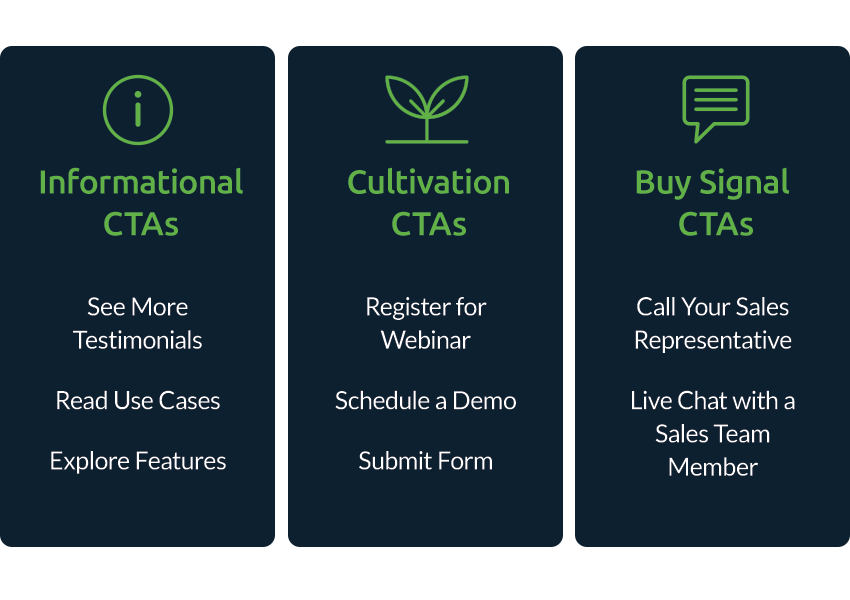June 21, 2022 / Marjoram
Does your corporate website help you market your product solutions? For many B2B marketers, or at least those willing to offer an honest opinion, the answer is often a firm “no.”

A corporate website serves a number of purposes for ingredient and industrial brands in the B2B sector. The site unifies numerous divisions, products and services — sometimes a mixture of operations that don’t obviously fit together — under one corporate umbrella. These sites offer your customers a way to find specifications for or troubleshooting help with myriad product offerings. Your site might power a few technical applications or host a live customer support experience.
But first of all, and most of all, the website is the marketing engine of any customer-facing, sales-oriented enterprise. Your site should be designed to drive leads to your sales team.
However, often B2B sites fail to warm up visiting prospects; they simply aren’t built to effectively market appropriate solutions to the right visitors. As a result, the website is the last place B2B marketers want to send their prospects.
That’s not a winning situation for anyone involved: not the sales team, not the product marketing teams, not the brand team. And, most importantly, not your customers.
B2B Product Marketing and Corporate Website Access
Too few B2B marketing teams have sufficient access to their corporate websites. Most product marketing teams have a measure of control over pages or sections that relate to the products under their purview. However, product teams are frequently restricted to a small sandbox and given limited, inflexible tools (pre-formatted landing pages, product pages, templates) to manage content.
IT vs. Marketing
In most cases, B2B corporate websites are managed by an IT webmaster and a dedicated team of developers or software engineers tasked with ensuring the site runs smoothly. One of their top concerns is giving away too much access to non-technical users.
For these teams, the primary goal is simple: Provide visitors access to the information on the website. The ability to update content to shape and tailor the web experience to prospects’ needs is a distant second.
Effective B2B product marketing, however, requires a more intentional and guided approach to user experience. And that’s difficult to achieve with limited site access and the digital marketing tools that come with it.
Confusing Homepage Experience
Complicating matters further is the confusing nature of B2B corporate sites. Frequently, they are an amalgamation of legacy websites belonging to formerly independent units or divisions cobbled together through mergers and acquisitions. In many cases, B2B website information architecture and navigation are oriented around the organizational structure and hierarchy of the company.
For people unfamiliar with the brand, the homepage experience is often disjointed, distracting and overwhelming. The set-up is not ideal for prospects navigating your site in search of specific solutions. But this outcome is not surprising given that web teams typically report to chief technology officers (CTOs), and not marketing executives.
Impact of Limited Website Access on Product Marketing
What happens when product marketers are not given the room and tools they need to achieve their goals on the company website? They take their “business” elsewhere.
B2B product marketers spend considerable time and effort shaping their prospects’ exposure to product and brand messaging. They are loath to turn those carefully-sculpted experiences to a site that isn’t designed to track user journeys or help close the deal.
When Marjoram clients talk to us about goals for their product messaging campaigns, they almost never mention the website. They prefer to concentrate on outbound or content marketing tactics where they know they’re better able to control and deliver their message. Email marketing, social media, informational video content, digital ads and multi-channel campaigns are all examples of marketing tactics that give B2B product marketers greater message control, more execution flexibility and a way to track performance.
When we start talking about funneling the generated leads to the website, however, the reaction we often face is hesitation, if not outright avoidance.
Why send prospects into a dark maze without a map and a light?
Winning Prospects with Your B2B Website
There is certainly a strong argument to be made that the reins of your corporate website belong in the hands of the marketing team and not IT. But let’s be honest. It’s not easy to win that argument, provided you even get the rare opportunity to present it.
Fixing the corporate website is not an option for most B2B marketing teams in the industrial space. But that doesn’t mean that you have license to ignore or de-prioritize your flagship marketing instrument. You just have to make do in a non-ideal situation. And that’s entirely possible, if you can accomplish the following three things:
- Utilize clear, benefit-driven product messaging
- Make your website entry points work for you
- Shape your prospect funnel according to your prospects’ needs
Do this successfully and you can orient your prospects to the right solution for their problem, steer them clear of distractions and build a protective moat around their experiences on your site. But first you have to get your prospects there.
Lean on Benefits in Outbound Product Messaging and Content Marketing
As we’ve noted previously, your B2B product messaging should always lead with benefits over features. Your outbound marketing efforts have to excel at capturing the attention and interest of your prospective customers. That’s best done with a clear, simple message that focuses on end-user and buyer pain points.
However, often B2B product messaging uses technical jargon that speaks to product features or specifications. B2B marketing teams naturally gravitate toward this approach because the products they market are highly technical. But prioritizing tech-speak too much and too early in the prospect cultivation process is a misstep.
Focus the narrative on the customer and the benefits of solving their problem instead. Doing so will help you to establish trust and motivate your audience to take the next step — clicking the link to your website.
Avoid the Homepage
It’s natural to assume that the customer experience on your website should start with the homepage, and that might be the intention of the brand team. But it’s not a hard and fast rule.
If the homepage is only going to confuse your prospects and distract them from their ultimate goal (finding your product), don’t send them there. Send them where you want them to go. Point your outbound marketing efforts directly to the landing and product pages you control.
Once you have your prospects on the right landing page, you can shape the rest of their website experience and the next step in their product discovery or purchasing process.
Shape Your Prospect Funnel
You may not have access to all aspects of your corporate website, but you can make full use of the templates and landing pages you do have at your disposal. Utilize them (as best you can) to create an intuitive, helpful and user-friendly prospect experience. This requires thinking through the questions and concerns your prospects might have and providing appropriate content in the right format.
Your landing page content should help you sort your prospects by their needs and entice them to continue their exploration. You can do this by providing calls-to-action (CTAs) for each category of need.

You want to limit your prospects’ exposure to a meandering corporate website experience as much as possible and route them to the next step in their journey as efficiently as possible. A structured, intentional landing page experience is critical to achieving these goals.
Great Marketing Beats Bad Web Design
Corporate websites in the industrial space are often unwieldy and largely inaccessible to B2B marketing teams. But you must find a way to work with what you have. Your website issues can be mitigated with a simple, benefit-driven product message and clarified outbound and content marketing strategies. Exercise the control you do have to sculpt compelling landing page experiences to anchor your prospect funnel.
Fresh Perspectives
A newsletter we send every other Friday to share our ramblings, perspectives, thoughts, and rants on all things B2B branding, messaging and marketing.
"*" indicates required fields


